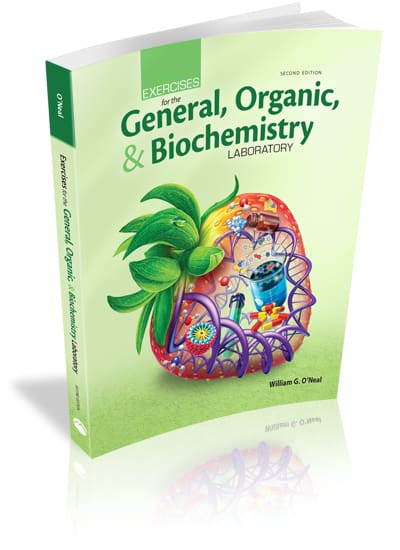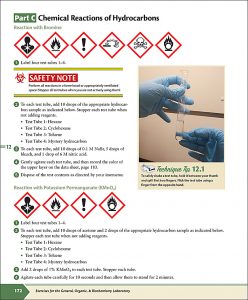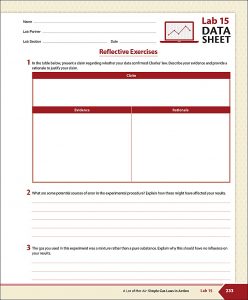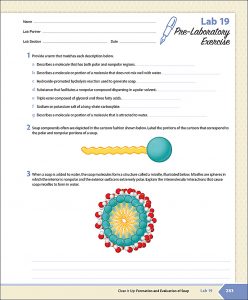
$72.00

This full-color, comprehensive, affordable manual is intended for a one-semester general, organic, and biochemistry course, preparatory/basic chemistry course, liberal arts chemistry course, or allied health chemistry course. The procedures are written with the goal of simplifying a complicated and often challenging subject for students by applying concepts to everyday life.
The first half of the lab manual covers general topics such as chemical and physical properties, elements of the periodic table, types of bonds, empirical formulas, and reaction stoichiometry. These labs form the foundation for future labs, which cover the basics of organic and biological chemistry. Experiments include the classification of organic compounds and the determination of biomolecules.
By the end of this course, students should have a solid understanding of the basic concepts of chemistry, which will give them confidence as they embark on various allied health careers.
Example of interior pages:



William G. (Will) O’Neal is a faculty member in the Chemistry Department at the University of Richmond, where he directs the organic chemistry laboratory curriculum. He was previously a chemistry instructor and physical sciences department head at Coastal Carolina Community College in Jacksonville, North Carolina. He received a Ph.D. in chemistry from Dartmouth College, where his research focused on the development of new synthetic routes to macrocyclic tetrapyrroles of the chlorin and bacteriochlorin classes. Will served as an American Chemical Society Congressional Fellow from 2008 to 2009 and subsequently worked as a congressional staffer. He and his family reside in Richmond, Virginia.